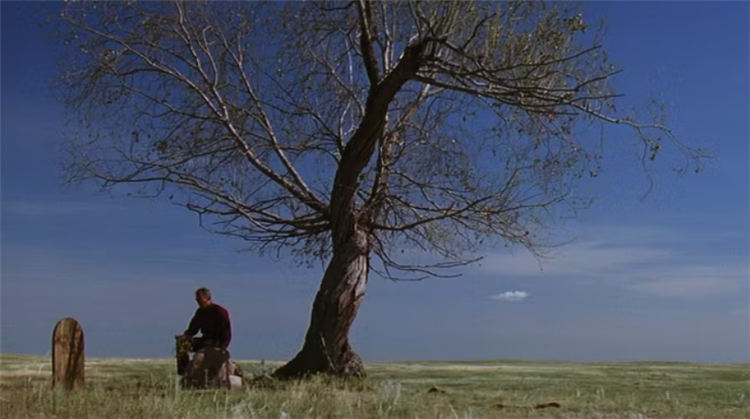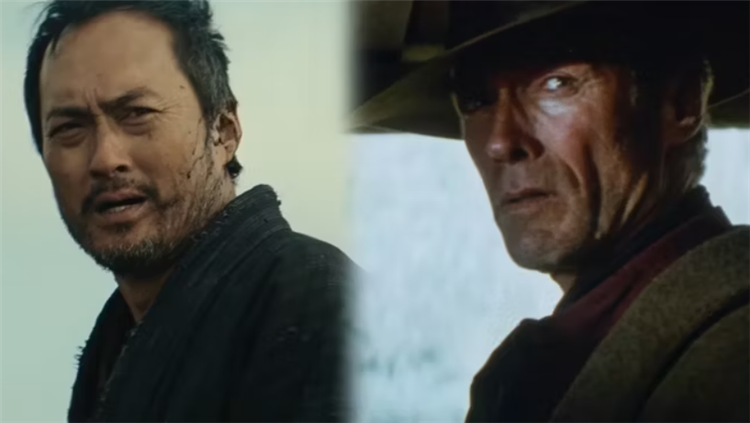For a huge chunk of Hollywood’s early history, westerns were a solid staple of the action and adventure genre. America’s first silent original Western, The Great Train Robbery in 1903 bolstered early audiences’ fascination with the Old West, let alone how entertaining cinema presented it. This love for the Western genre continues today even though it’s manifested through franchise shows like The Mandalorian and contemporary dramas like Yellowstone.
Despite this genre’s pioneering cinema entertainment value, some of Hollywood’s most formative hits from Westerns were actually adapted remakes of another genre from another country entirely, the samurai films of Japan. The Magnificent Seven and A Fistful of Dollars are only a couple whose plots were lifted from a genre filled with stoic and sword-wielding warriors. In 2013, director Lee Sang-il pulled a switcheroo with Hollywood’s plot-lifting ways and instead made a samurai film based on the famous Western Unforgiven.
Unforgiven 1992 goes Samurai in 2013
The Venice Film Festival and the Toronto International Film Festival of 2013 were graced with the Japanese film Unforgiven, which was a reverse study on the Western genre’s proclivity for lifting samurai plotlines. Director Lee Sang-il alongside his starring actor, Ken Watanabe, recreated the classic film within the veil of a samurai redemption story. For the same reasons Hollywood adapted Japanese stories for decades, Lee Sang-il styled a Western script and adapted it to fit the genre and specific period of Japanese history allowing for the small-scope and intimate tale that Clint Eastwood headlines in the original film.
The original 1992 film is about a retired and notorious outlaw and murderer who pursues cowboys with a price on their heads for slashing a prostitute in the face. Bill Munny, the lead played by Clint Eastwood, is that retired outlaw. He is now a widower with a failing farm and two children to feed and agrees to take on the $1,000 bounty job. The Japanese 2013 remake restyles Bill as “Jubei the Killer” a former samurai under the Tokugawa shogunate who escaped the Imperial army’s pursuit of him during the Meiji period. Jubei is also a failed farmer with two children. He takes on a similar bounty against two brothers who abuse and scar a prostitute in a small town.
Samurai Unforgiven Turns the Tables on Hollywood

- Unforgiven 1992 and Unforgiven 2013 both take place in the late 1800’s both a time when the cowboy culture of the old west was diminishing, and the political stylings of samurai and Shogun were being outlawed.
- Events in The Last Samurai are loosely based on the events leading to the dissolution of the samurai in the 1800’s.
Although Clint Eastwood’s Unforgiven is a tale meant to be a story that shows a less black-and-white view of the West and subverts the expectations of the genre to build an intriguing tale, Lee Sang-il’s Unforgiven leans into the intense moral ambiguity of samurai films toil with amid the shifting politics of differing eras and states of rule in samurai history. In a world and culture that is slowly fading under the shadow of Imperial rule, laws outlawing the open carry of swords and regalia about the samurai build a deeper adaptation to the no-gun rule of the town of the Hollywood version of Unforgiven. Furthermore, the returning presence of Masaharu, the writer who accompanies the samurai on his journey, plays a similar role as in the original, as they toiled with the end of the romanticized high period of samurai exploits and adventures, only to be diminished to his hero being a fugitive returning to a life of bounty hunting to feed his children.
Only a few years before this Japanese adaptation of Unforgiven, Hollywood would release The Last Samurai, a story very loosely based on the samurai Saigō Takamori, responsible for the Satsuma Rebellion. Saigō Takamori was restyled with the name Katsumoto and played by Ken Watanabe alongside Tom Cruise, playing the captured American Captain who was contracted to train the Emperor’s army. This film revived a love and interest in the West’s fascination with Japanese samurai culture, however, the remake of Unforgiven within this same period, authentically represented near the end of the samurai period, built a much more intimate look into how those political events rippled in history. Ken Watanabe taking the role of Jubei during the height of his recognition in Hollywood, reprising a role as a samurai in a time just before the events of the Satsuma Rebellion gives a subtle nod to the authenticity and understanding Ken Watanabe had about playing a character who was a disinherited warrior of a bygone period.
The Western Storyline Fits Japan’s Historical Timeline

- The Ainu people are an ethnic group mainly from Northern Japan. One of the characters in 2013’s Unforgiven is half Ainu.
- The Ainu are also the inspiration for Ashitaka and his people in Princess Mononoke.
Considering both Unforgiven films had themes that were a commentary about the end of their prolific historical warriors fading from time, the move to adapt Unforgiven into a post-samurai-era film works incredibly well. From the weaponry bans to escaping the law even in the light of serving moral justice, both films tell stories relevant to their periods, which are quite close to one another. Clint Eastwood’s Unforgiven takes place in 1880 and Lee Sang-il’s takes place in 1869, just over a decade apart. This period of proximity helps the relation between the films feel that much closer even though the style and culture of the countries in the film are quite different. One interesting aspect of 2013’s Unforgiven is the presentation of a half-Ainu hunter. The Ainu were considered an indigenous culture of Japanese peoples who were subjugated and oppressed throughout Japanese history similar to the First Nations of the United States. Although there are no indigenous characters in Clint Eastwood’s Unforgiven, Lee Sang-il’s version makes this an opportunity to insert a rarely seen peoples as a supporting character in the film. This decision enriched the audience’s knowledge of Japanese diversity and leaned into the need for positive representation in the Western genre’s storytelling methods.
The Meiji period of Japan’s history heralded the swan song of the samurai as Imperial rule and Western influence dominated the cultural landscape. Rebellions were crushed and warring lords were replaced with squabbling bureaucrats and mercantile enterprisers surrounding the emperor. This period is a distance from Japan in the 1600 as is seen in Shōgun. As power continues to consolidate as an empire, the smaller villages and towns become overlooked and impoverished. This gives the places shown in 2013’s Unforgiven a similarly ramshackle look to what a Western American frontier would look like if it was happening in small Japanese villages and towns. Although 1992’s Unforgiven is dominated mainly by gunfights, 2013’s showed a world caught between eras, where gunpowder and steel clash side-by-side. This unique flavor is what makes this adaptation of Unforgiven, one of Hollywood’s most acclaimed westerns, so special, as it not only uses the plot to tell a Japanese story, but it adds aspects to the genre that the original could have never had without a storytelling lens from another country.
